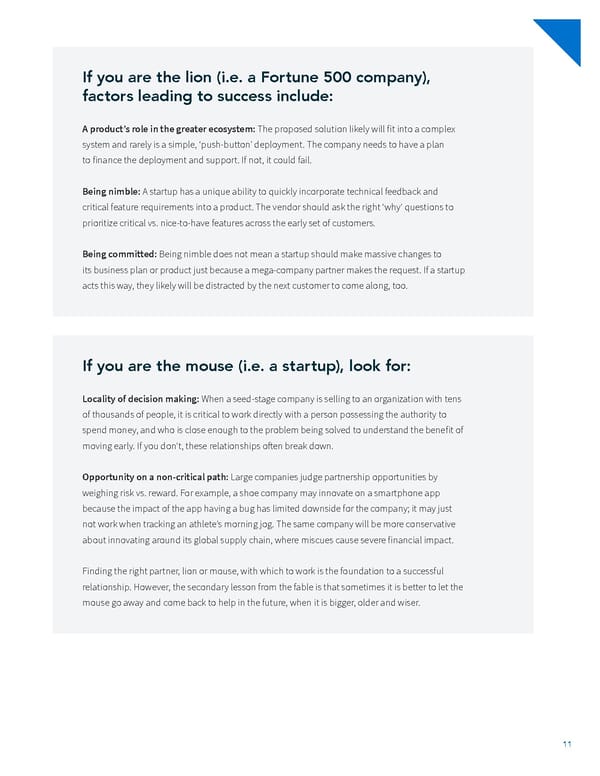If you are the lion (i.e. a Fortune 500 company), factors leading to success include: A product’s role in the greater ecosystem: The proposed solution likely will ift into a complex system and rarely is a simple, ‘push-button’ deployment. The company needs to have a plan to ifnance the deployment and support. If not, it could fail. Being nimble: A startup has a unique ability to quickly incorporate technical feedback and critical feature requirements into a product. The vendor should ask the right ‘why’ questions to prioritize critical vs. nice-to-have features across the early set of customers. Being committed: Being nimble does not mean a startup should make massive changes to its business plan or product just because a mega-company partner makes the request. If a startup acts this way, they likely will be distracted by the next customer to come along, too. If you are the mouse (i.e. a startup), look for: Locality of decision making: When a seed-stage company is selling to an organization with tens of thousands of people, it is critical to work directly with a person possessing the authority to spend money, and who is close enough to the problem being solved to understand the beneift of moving early. If you don’t, these relationships otfen break down. Opportunity on a non-critical path: Large companies judge partnership opportunities by weighing risk vs. reward. For example, a shoe company may innovate on a smartphone app because the impact of the app having a bug has limited downside for the company; it may just not work when tracking an athlete’s morning jog. The same company will be more conservative about innovating around its global supply chain, where miscues cause severe ifnancial impact. Finding the right partner, lion or mouse, with which to work is the foundation to a successful relationship. However, the secondary lesson from the fable is that sometimes it is better to let the mouse go away and come back to help in the future, when it is bigger, older and wiser. 11
 Guide to Breaking into the Enterprise Market Page 10 Page 12
Guide to Breaking into the Enterprise Market Page 10 Page 12